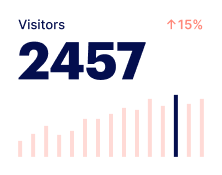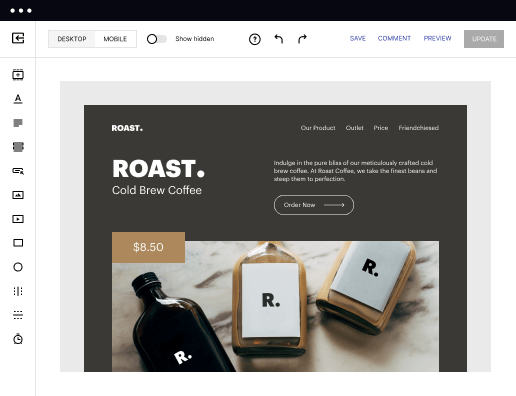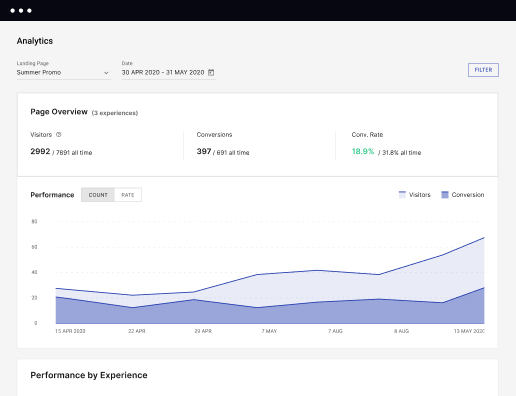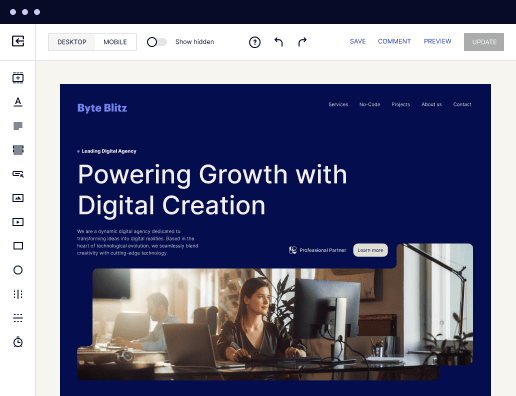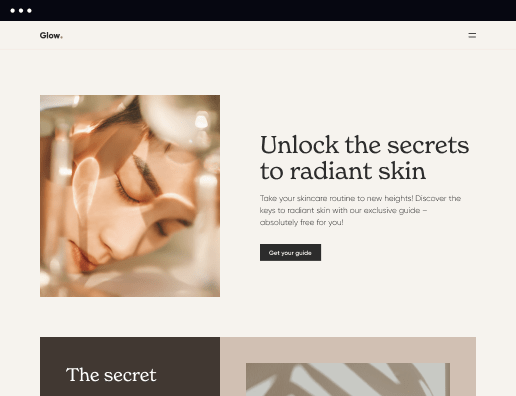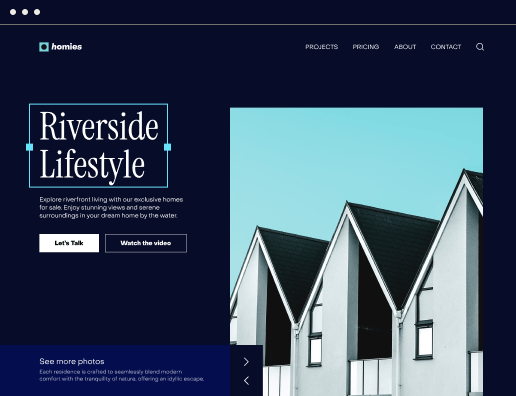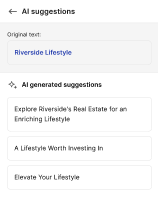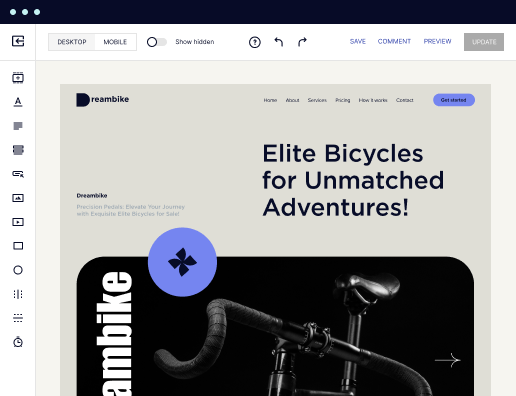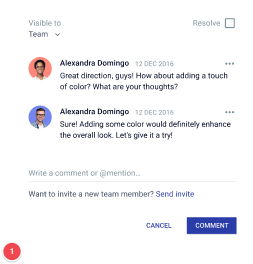Create Your Optimal HTML Page for Material Handlers with Instapage
Building efficient HTML pages tailored for material handlers is crucial for ensuring a streamlined workflow. Instapage provides an intuitive platform that allows marketers to easily create customized landing pages that enhance user experience and drive conversions. With access to over 100 conversion-focused layouts, there's no need for coding expertise, making it accessible for professionals across various sectors, including marketing, education, and financial services.
Understanding the Basics of HTML for Material Handlers
Before diving into page creation, it’s essential to grasp the fundamental concepts of HTML, especially when targeting specific user needs. Material handlers require clear and effective communication through their pages, which can be achieved with the right HTML structure. This section will cover key elements such as:
- HTML tags: Understanding tags like
Get more out of Make your HTML page for Material handlers
Improve your Quality Score with quick load technology for landing pages
Increase conversions with content that aligns with your ads and audiences
Achieve maximum ROI by scaling your marketing initiatives
Get started
“Instapage gives us the ability to tailor our landing page content and layout to tell a unique story for each geographical target. The platform also enables us to create different variations with content that performs well for each unique channel. Every marketing team needs this!”
Tamar Friedland, Sr. Director of Global Paid Marketing
"Instapage has truly maximized our digital advertising performance by enabling us to offer matching, personalized experiences for every ad and audience. Now we can scale our landing page experiences as efficiently and effectively as we scale the ads themselves."
Darren Lepke, Marketing Director
"If we have to wait on a developer, our creative velocity plummets. But Instapage has made it possible for us to exponentially grow our advertising programs and convert more customers"
Alex Kracov, Head of Marketing
Leading the way in building high-performing landing pages
FAQs
What is an HTML page for material handlers?
An HTML page for material handlers is a specially crafted webpage designed to present information, services, or products relevant to material handling professionals. It focuses on delivering clear content and enhancing user experience through effective design.
How does Instapage help create an HTML page for material handlers?
Instapage offers a user-friendly platform that provides 100+ customizable templates. These templates help marketers quickly build HTML pages tailored for material handlers without needing any coding skills.
What are the key features of an HTML page for material handlers using Instapage?
Instapage features include A/B testing capabilities for optimizations, dynamic text replacement for personalization, detailed analytics for performance tracking, and easy collaboration tools for team projects.
Why is Instapage a good choice for building HTML pages?
Instapage is a great choice due to its extensive library of conversion-focused templates, built-in optimization tools, and user-friendly drag-and-drop interface, making it accessible for marketers in various sectors.
What benefits does using an HTML page for material handlers provide?
Using a well-crafted HTML page tailored for material handlers improves user engagement, increases conversion rates, establishes brand trust, and supports targeted marketing efforts.
How can A/B testing enhance my HTML page for material handlers?
A/B testing allows you to compare different variations of your HTML page to determine which elements perform best, contributing to higher conversions based on real user data.
What common challenges do marketers face when creating HTML pages?
Marketers often struggle with ensuring message clarity, maintaining design consistency, and optimizing for conversion, especially when addressing the nuanced needs of industry-specific audiences like material handlers.
What are the latest trends in HTML page design for material handlers?
Current trends include personalized user experiences through dynamic content, mobile-first design approaches, and incorporating interactive elements to engage users effectively.
See how to make your html page for material handlers in action
See how to make your html page for material handlers in action
When working on a project and needing to share your code, there are quick options available. The fastest method is to visit pen.new in your browser, which opens a new CodePen. You can easily upload your HTML, CSS, and JS files by dragging them into their respective tabs. Alternatively, if you prefer JSFiddle, it operates similarly, allowing you to paste your code into the designated sections for HTML, CSS, and JavaScript. Both platforms enable you to share your work effortlessly with others, ensuring collaboration is smooth and efficient.
Ready to skyrocket conversions?
Supercharge your ad campaigns with high-performing landing pages.
Get started
People also ask about Make your HTML page for Material handlers
How do you make the first page in HTML?
Here we go! Lets open our text editor, create a new file named index. html , and save it to a location we wont forget. Within the index. Inside the element, lets add and elements. Inside the element, lets add and elements. Now its time to see how weve done!
How do I publish my HTML website?
To publish a simple HTML webpage on the internet, you will need to follow these steps: Create the HTML code for your webpage using a text editor, such as Notepad or Sublime Text. Save the file with a .html extension. Upload the file to a web host, such as GitHub Pages, Amazon Web Services (AWS), or GoDaddy.
How do I create a form page in HTML?
To create an HTML form, we will use the HTML element. It starts with the tag and ends with the tag. We can add the input elements within the form tags for taking user input.
How do I get an HTML page?
Click CTRL + U in an HTML page, or right-click on the page and select View Page Source. This will open a new tab containing the HTML source code of the page.
How to make a form handler in HTML?
Form Handler with HTML Forms On the HTML form tag, set the method attribute to post, and set the action attribute to the Action URL. Each of the form field elements that you wish to submit must have their name attribute set to one of the listed Available Profile Fields.
How to create an HTML page?
How to Create an HTML File Step 1: Add a declaration. Step 2: Add an element. Step 3: Add a language attribute. Step 4: Add a head and body section. Step 5: Add a title in the head section. Step 6: Add HTML elements in the body section.
Can HTML and Python work together?
You can use python in your HTML code. You dont need to know javascript. PyScript is not just HTML only, it is more powerful, because of the rich and accessible ecosystem of Python libraries.
How do I create an HTML page in Chrome?
0:21 2:00 How to Create an HTML Web Page on a Chromebook - YouTube YouTube Start of suggested clip End of suggested clip Drive launch caret on your chromebook. To start coding click plain text at the bottom of the window.MoreDrive launch caret on your chromebook. To start coding click plain text at the bottom of the window. And select html from the options.

